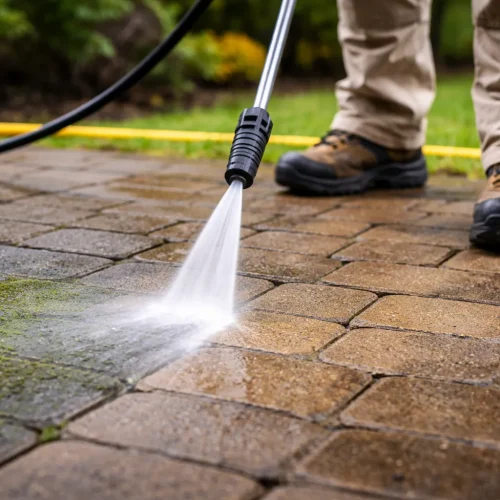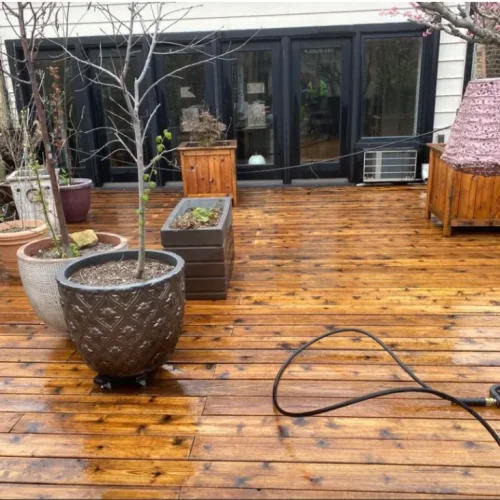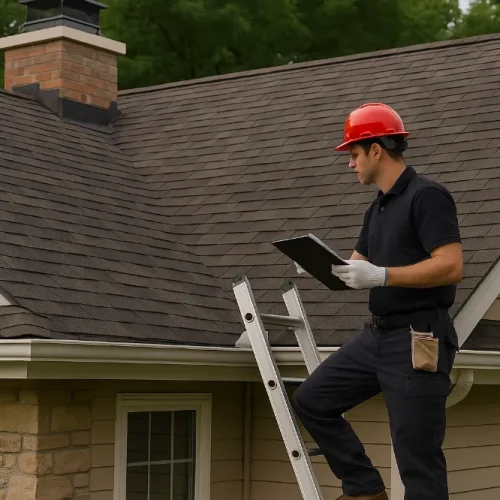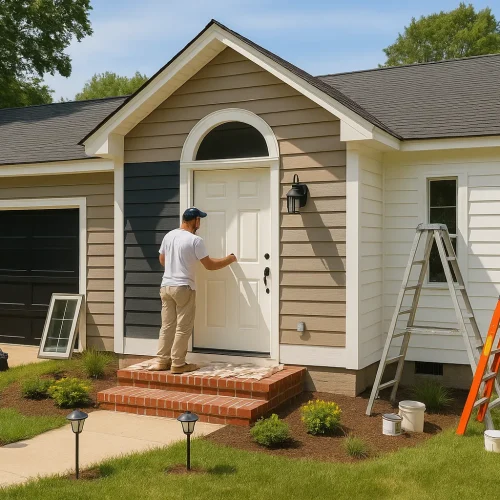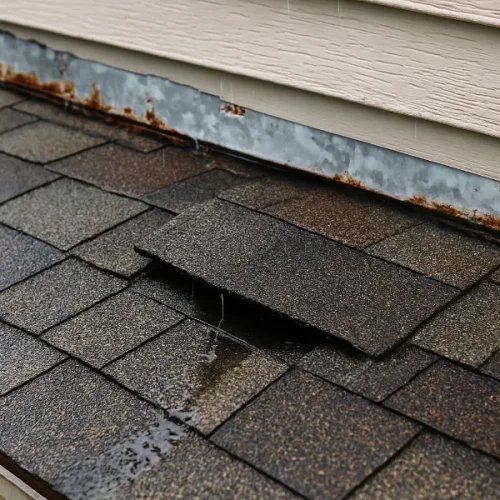
You vacuum the floors, wipe down every surface, and make sure no crumbs are left behind. Everything smells fresh, and your home feels spotless. Yet, one day you notice a line of ants near the sink or a spider in the corner. It’s frustrating because you’ve done everything right. The truth is, pests don’t always invade messy homes. Even the most organized and well-maintained spaces can attract insects or rodents. They don’t come for dirt they come for survival. Warmth, moisture, food, and shelter are the only things they need, and every home, clean or not, provides some of those. Understanding why this happens helps you focus on the real causes instead of assuming cleanliness alone keeps pests away. Below, we’ll look at how even tidy homes unknowingly create conditions that pests love and how to prevent that from happening.
1. Plants and Yards Can Be Hidden Entry Points
Your outdoor space can easily become a bridge for pests. Mulch, overgrown shrubs, or stacked firewood close to the house attract insects that eventually move indoors. Even indoor plants can carry tiny bugs in the soil or on leaves. Check plants before bringing them inside and avoid letting outdoor materials rest against exterior walls. Keeping some space between vegetation and your home creates a simple but effective barrier. If pests keep reappearing despite your efforts, it may be time to get advice from a local pest control service. Professionals can identify sources that aren’t obvious and suggest safe ways to prevent future invasions.
2. Moisture Is the Real Magnet
If there’s one thing pests love more than food, it’s water. Many insects survive longer without food than without moisture. That’s why damp areas attract them first. A leaky pipe under the sink, condensation near windows, or humidity in the bathroom can become a steady water source. Silverfish, cockroaches, and termites thrive in moist places because it helps them stay hydrated and breed faster. Reducing moisture is one of the easiest ways to discourage pests. Use exhaust fans in bathrooms, repair leaks quickly, and make sure basements or crawl spaces stay dry. Cleanliness can’t fix a leak, but maintenance can.
3. Food Sources Aren’t Always Obvious
It’s easy to assume that if you keep your counters spotless, pests won’t find food. But insects and rodents can survive on things you wouldn’t even consider edible. Tiny crumbs under the stove, grease residue near burners, or pet food left overnight can sustain a small infestation. Some pests even feed on soap, paper, and fabric glue. These hidden food sources go unnoticed in most homes. Regular deep cleaning helps, but what matters more is being aware of these less obvious sources. Vacuuming behind appliances and sealing pantry items in airtight containers can make a big difference.
4. Structural Gaps Invite Unwanted Guests
Pests often enter homes through spaces you never notice. A small crack near a window frame or an unsealed vent can be an open door for ants, spiders, and even rodents. Weather changes make this worse. As temperatures drop, pests search for warmth, and tiny openings become their entry points. You can’t clean your way out of this issue it requires maintenance. Inspect the outer walls, seal gaps, and replace worn weather stripping. Use mesh covers on vents and make sure window screens fit tightly. These small steps can stop pests before they step inside.
5. Shared Spaces Can Spread Pest Problems
In multi-unit buildings, your home may be spotless, but pests can still sneak in through shared walls or connected systems. Apartments, duplexes, and townhouses often have linked plumbing, wiring, and vents. These small pathways can let insects and rodents travel between units without you realizing it. Cockroaches, for example, often move through drainpipes and ventilation systems. If a neighbor has an infestation, it can spread quickly to nearby homes. You might notice them first in kitchens and bathrooms, where plumbing lines connect. The best defense is communication and prevention. Let your building manager know right away if you spot pests. Regular inspection of shared areas like basements and utility rooms helps everyone keep control. Sealing gaps around pipes and using door sweeps also reduces the chance of pests crossing from one home to another.
6. Changing Seasons Push Pests Indoors
When the weather shifts, pests follow comfort. In summer, they look for cool, shaded spots. As temperatures drop in fall or winter, they head inside for warmth and shelter. Cleanliness doesn’t stop this seasonal migration it’s driven by instinct and survival. Ants, spiders, and rodents are some of the most common intruders during these transitions. They often enter through small cracks, vents, or open windows. Some pests even lay eggs indoors to survive the colder months. Being proactive helps. Check window frames, attics, and basements before each season changes. Store food properly and close garbage bins tightly. Taking small preventive steps before pests seek shelter can save you from a larger problem later.
7. Travel and Packages Can Bring Pests In
Sometimes, pests don’t come from your home or yard they come with you. Traveling, shopping, or even receiving deliveries can introduce unwanted guests. Bedbugs often hitch a ride in luggage, while roaches or small beetles can hide inside cardboard boxes or grocery bags. Once inside, they spread quickly if not caught early. Checking your belongings before unpacking can help avoid this. When you bring in boxes or furniture, inspect them carefully, especially if they’ve been stored outdoors or in warehouses. Unpacking in well-lit areas makes it easier to spot pests. Regularly cleaning around entryways and disposing of packaging quickly also limits hiding places.
A clean home is the foundation of a healthy living space, but it doesn’t guarantee a pest-free one. Pests are driven by basic needs — food, water, and shelter — not by how tidy your rooms are. Even the best-maintained homes can unknowingly offer what they’re looking for. Staying pest-free means thinking beyond cleaning. Focus on repairs, moisture control, and prevention. Be alert to seasonal changes, inspect hidden areas, and act quickly when you spot early signs. And when in doubt, don’t hesitate to call in professional help. Clean homes can still face pests, but with awareness and consistent action, you can keep them from becoming more than a brief nuisance.
FAQs
Yes. Even spotless homes can attract pests because they seek warmth, moisture, and shelter not necessarily dirt.
Ants are often drawn to water sources like sinks or condensation, and even microscopic food traces can attract them.
Soil and leaves can carry small insects such as fungus gnats, aphids, or mites that later spread inside the home.
Grease residue, crumbs under appliances, pet food, and even items like soap or paper can feed insects and rodents.
Leaks, damp basements, and humidity create ideal environments for cockroaches, termites, and silverfish to thrive.
Small cracks, gaps near windows, vents, or pipes act as entry points — especially during seasonal temperature changes.
Yes. In shared housing, pests often move between units through plumbing lines, wiring, and ventilation systems.
Pests migrate indoors in cold or rainy weather to find warmth and shelter, regardless of how clean your home is.
Absolutely. Bedbugs, beetles, and roaches can hitchhike on luggage, packages, or grocery bags.
Combine cleanliness with maintenance: seal gaps, reduce moisture, inspect deliveries, and act fast when you notice signs of pests.


